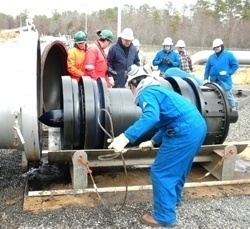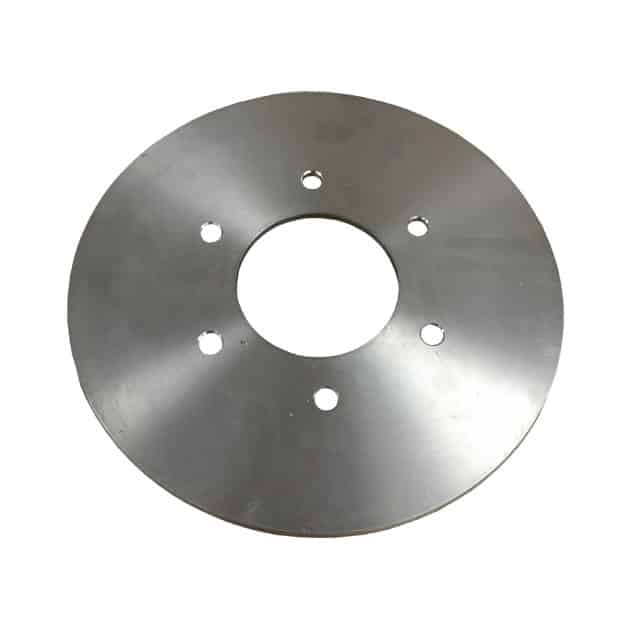Pipeline pigging is a crucial aspect of pipeline maintenance that ensures the efficient and safe transportation of various fluids, such as oil, gas, and water. This comprehensive guide will introduce pipeline pigging, its importance, how it works, and the types of pigs used in the industry.
What is Pipeline Pigging?
Pipeline pigging involves using devices known as pigs to perform various maintenance tasks within a pipeline. These tasks can range from cleaning and inspecting to separating different types of products. The term “pig” is believed to have originated from the squealing sound early pigs made while traveling through pipelines.
Why is Pipeline Pigging Essential?
Pipeline pigging is essential for several reasons:
Maintaining Pipeline Efficiency: Over time, pipelines can accumulate debris, scale, and other deposits that reduce flow efficiency. Pigging helps remove these obstructions, ensuring optimal flow rates.
Ensuring Pipeline Integrity: Regular pigging can identify and address potential issues such as corrosion, leaks, and structural weaknesses, preventing catastrophic failures.
Product Separation: In multi-product pipelines, pigs separate different products, preventing contamination and ensuring product quality.
Regulatory Compliance: Many regulatory bodies require regular pipeline inspections and maintenance. Pigging helps operators comply with these regulations, avoiding fines and operational shutdowns.
How Does Pipeline Pigging Work?
Pipeline pigging involves several key components and processes:
Launchers and Receivers: These are special pipeline sections where pigs are inserted (launched) and removed (received). Launchers and receivers have closures that allow pigs to be loaded and unloaded safely.
Pigs are devices that travel through the pipeline, propelled by the fluid’s flow or mechanical means. There are various types of pigs, each designed for specific tasks.
Propulsion: Pigs can be propelled by the product’s flow in the pipeline, compressed air, or other mechanical means.
Tracking and Monitoring: Operators use various methods to monitor the pig’s progress and condition, including sensors, GPS tracking, and data loggers.
Types of Pigs
There are several types of pigs, each designed for specific purposes:
Utility Pigs: These pigs are used for basic maintenance tasks such as cleaning and product separation. They include brushes, scrapers, and foam pigs.
Inspection Pigs: Also known as intelligent pigs, these devices are equipped with sensors and data loggers to inspect the pipeline’s condition. They can detect corrosion, cracks, and other anomalies.
Specialty Pigs: These pigs are designed for specific tasks, such as dewatering, drying, and coating applications.
Utility Pigs
Utility pigs are the workhorses of the pigging world. They perform essential maintenance tasks, including:
Cleaning: Brush and scraper pigs remove debris, scale, and deposits from the pipeline walls. Foam pigs are flexible and can navigate bends and irregularities while cleaning.
Product Separation: In pipelines transporting multiple products, utility pigs help separate batches, preventing contamination. Batch pigs create a physical barrier between different products, ensuring purity.
Inspection Pigs
Inspection pigs, or intelligent pigs, are equipped with advanced technology to assess the pipeline’s condition:
Magnetic Flux Leakage (MFL) Pigs: These pigs use magnetic fields to detect metal loss, corrosion, and other anomalies. They provide detailed data on the pipeline’s internal condition.
Ultrasonic Pigs: These pigs measure wall thickness and detect cracks and other defects using ultrasonic waves. They are highly accurate and can detect even minor issues.
Caliper Pigs: These pigs measure the internal geometry of the pipeline, identifying deformations, dents, and other structural issues.
Specialty Pigs
Specialty pigs are designed for specific tasks, such as:
Dewatering Pigs remove water from pipelines after hydrostatic testing or maintenance. They ensure the pipeline is dry and ready for operation.
Drying Pigs: These pigs remove moisture from the pipeline, preventing corrosion and ensuring product quality.
Coating Pigs: These apply protective coatings inside the pipeline, extending its lifespan and preventing corrosion.
The Pigging Process
The pigging process involves several steps, from preparation to post-pigging analysis:
Planning and Preparation: Operators plan the pigging operation, selecting the appropriate pigs and ensuring the pipeline is ready. This includes checking the pipeline’s internal condition and ensuring launchers and receivers are in place.
Launching the Pig: The pig is inserted into the launcher and propelled through the pipeline. Operators monitor its progress, using sensors and tracking devices to ensure it moves smoothly.
Pigging Operation: As the pig travels through the pipeline, it performs its designated tasks, such as cleaning, inspection, or product separation. Operators collect data from inspection pigs for analysis.
Receiving the Pig: Once the pig reaches the receiver, it is removed and inspected. Operators analyze the data collected during the pigging operation and make necessary adjustments to the pipeline.
Benefits of Regular Pipeline Pigging
Regular pipeline pigging offers several benefits:
Enhanced Pipeline Efficiency: Regular cleaning removes obstructions, ensuring optimal flow rates and reducing energy consumption.
Improved Safety: Pigging enhances pipeline safety by identifying and addressing potential issues and preventing leaks and failures.
Cost Savings: Preventive maintenance through pigging reduces the need for costly repairs and downtime.
Compliance: Regular pigging helps operators comply with regulatory requirements, avoiding fines and operational shutdowns.
Extended Pipeline Lifespan: Pigging extends the pipeline’s lifespan by maintaining its internal condition and protecting the investment.
Challenges and Considerations
While pigging is essential, it comes with challenges and considerations:
Pipeline Design: Not all pipelines are designed for pigging. Older pipelines or those with complex configurations may require modifications.
Pig Selection: Choosing the right pig for the task is crucial. Using the wrong pig can damage the pipeline or fail to achieve the desired results.
Operational Disruptions: Pigging operations can disrupt normal pipeline operations, requiring careful planning and scheduling.
Data Management: The data collected by inspection pigs must be analyzed and interpreted accurately. This requires skilled personnel and advanced software.
Keep Your Pipeline in Top Shape
Pipeline pigging is an indispensable part of pipeline maintenance, offering numerous benefits, from enhanced efficiency to improved safety. By understanding the basics of pigging, operators can ensure their pipelines remain in optimal condition, avoiding costly repairs and operational disruptions. Regular pigging protects the pipeline and provides safe and efficient transportation of vital resources.
Contact Inline Services Today
Are you interested in optimizing your pipeline operations with advanced ILI tools? Contact the experts at Inline Services. With over 30 years of experience delivering high-quality ILI services, we are dedicated to helping you achieve the best results in pipeline maintenance. Let us streamline your inspection processes and improve the safety and efficiency of your pipelines.




